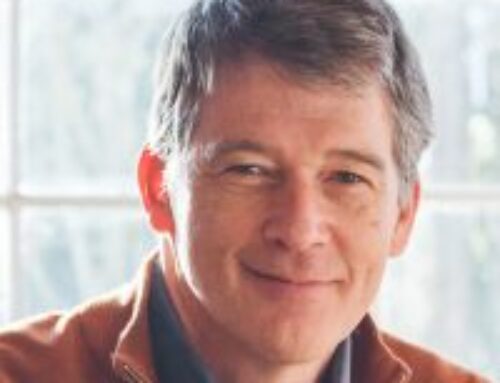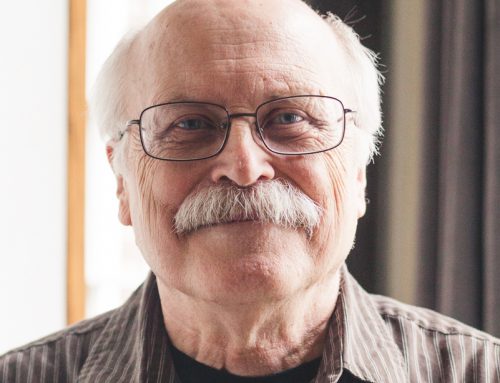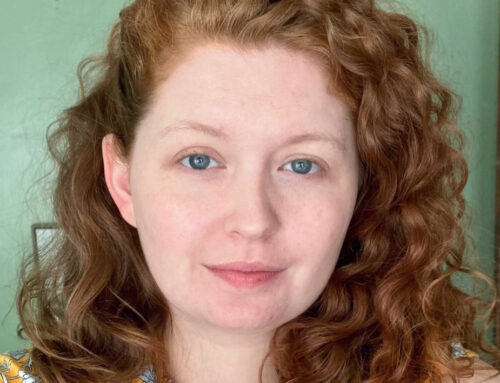Grief is a mysterious beast. It can come upon us like a tidal wave, displacing the ordinary in our lives for a time. Like all suffering, it raises the important questions of life: Who are we? Why are we here? Where are we going? And in a society that avoids pain at all costs, discovering our own course through grief is sometimes a winding road. It is a highly individual process, but with elements common to us all. What follows are some reflections on my own winding road through loss and grief.
I was not yet three when I first lost someone I loved. My oldest brother died of leukemia just after his eighth birthday. To my five-year-old brother, Jim, and me, Steve had been the devoted and doting big brother. Suddenly, he was gone. It was the 1950s, and modern society had already sanitized and privatized death. Children were often “protected” from it, shuffled off to the care of relatives rather than attending funerals. Kubler-Ross had not yet published her seminal work, On Death and Dying, which outlined the stages of grief. Like hardship in general, death was not readily discussed in suburban post-war America, and my family was no exception. Yet, that event has in many ways defined me. Thirty years later, it swept over me like it was yesterday. Aside from losing a brother to death, I felt I had lost his memory also. Grief does not go away on its own. I am not sure it ever goes away entirely.
A few months ago, the ordinary was again displaced for my family and me when we lost my mother. In the 1990s, with the advent of hospice care, living wills, and even assisted suicide, we think “death” and “grief” are more open topics. But my recent experience has shown me this is not true; the sanitation of death that came with modernity still prevails. In addition to the internal and societal voices rushing me through my sorrow, the medical circumstances surrounding my mother’s death illustrate this.
My mother’s decision to forego treatment that could have prolonged her life seemed to baffle some in the medical community. But she had been wanting to “go home” for a long time. Unable to speak as the result of her stroke, she revealed her deep relief and contentment at the prospect when she responded to the final decision with the broadest smile we had seen in months. Promptly, however, a subtle dividing line arose among the health workers involved in her care: those who accepted death and those who resisted it. It is as if modern medicine has shifted our assumptions about life and death. Although we may not say it aloud, we would like to believe that, as medical science advances, maybe one day we won’t have to die.
In her short film, “The Vanishing Line,” emergency physician Maren Monsen candidly explores her profession’s discomfort with death. Her own awareness grew after she successfully resuscitated an elderly patient before his records were available. Once in hand, the records revealed a “Do not resuscitate” order. After confirming his wishes, she removed the intubation tube. Not much later, she walked by his room and noticed that he was alone. Moments earlier, an entire team of health workers had been laboring to prolong his life. Now that death was imminent, they were absent. The stark contrast caused her to question the training which had done nothing to prepare her for dealing with the dying. Dr. Monsen concludes her film wondering what it will be like to be a doctor who “doesn’t see death as the enemy.”
Medically speaking, we must stop seeing death as the enemy. Our conviction that medical science can defeat physical death has led not only to vast and futile overspending in the last months of life but, more significantly, to magnified emotional trauma both for those dying and for their loved ones. Caring for ailing family members now entails making far more decisions than were ever meant to be ours. For the family members making the decisions, the wish to delay the inevitable loss and associated grieving is understandable. Medical science is quick to promise a seemingly unlimited supply of treatment options in the last stages of life. But as Dr. Monsen astutely observes, prolonging life too often leads instead to prolonging death.
According to Dr. Sherwin Nuland in How We Die, modern dying allows us to “deny the power not only of death but of nature itself.” In truth, death is the ultimate revelation of our creaturehood. God decides when we will be born and when we will die. Despite high-tech medical miracles, our fate is ultimately in God’s hands. Beginning in the Garden, we have sought autonomy from God. Physical death remains the ultimate challenge to this illusion of autonomy.
Believers like my mother can actually welcome death. We can understand it as our final release from the suffering of this life into the presence of our Lord. I wanted to help my mother with this still frightening transition, so I spoke to her of heaven. I read to her from Bunyan’s Pilgrim’s Progress, where Christian fords the River to the glorious City. After a tumultuous crossing, the heavenly host speaks of the holy place to the pilgrims: “You must there receive the comfort of all your toil, and have joy for all your sorrow; you must reap what you have sown, even the fruit of all your prayers, and tears, and sufferings for the King by the way.” Two days later, my mother opened her eyes wide and stared past us, as if she were watching those gates open, and breathed her last.
Since her disabling stroke two years earlier, there had a been other occasions when we thought God might grant my mother’s wish to be finished. Finally, His time for her had come, and He gave her a relatively smooth transition from this life. But this was not guaranteed. In preparing for her imminent death, I found Bunyan’s description of Christian’s flailing in the River extremely comforting. I realized that, regardless of what her death looked like externally, God would be carrying her, by His grace alone, into His promised land. When the end finally came, I was truly relieved for her to be finished with her suffering, which had certainly intensified during the past two years.
Having an accurate view of death is good. But too often, our view of death as release “to a better place” distracts us from our anguish. Although we use these words to comfort one another, they can reveal an insensitivity to the magnitude of change and loss that grief is. My mother was released, but I was not. I am still here, left to struggle with these big questions. Grief hurts like hell. And we don’t want it to be this hard. Once again I am aware of how desperately we seek to avoid our pain. With our human allergy to discomfort, we must be careful not to “spiritualize” our grief, for ourselves or for each other.
There is not good societal support for grieving, either within or outside our churches. Numerous cultures, past and present, have recognized and accepted bereavement more readily than ours. In one South American Indian culture, the widow wears her garments of grief openly for at least a year. Yet in our culture, where we allow new parents a six- to eight-week leave from work, we expect a grieving family member–more so a grieving friend–to be back at work a few days after the funeral. In some cases, returning to a normal routine can be an important part of healing, but in others, it can hinder the natural process by which we struggle to adjust to life without our partner, our parent, or our friend.
We want to organize our grief. If we can find ways to compartmentalize it, schedule it, and finally, be finished with it, then we will feel more comfortable. Kubler-Ross’s outline of the five stages of grief has been an important step in normalizing the process, but it can too easily foster the illusion that our grief is predictable. Worse still, it can give the impression that there is a right way and a wrong way to “do” it. I have found that sorrow is not easily categorized or scheduled. My process is my process. Yours is yours. But it is a process, and that means, in part, that we can not finally wrap it up with a nice bow on top.
C. S. Lewis’s reflection on the death of his beloved wife in A Grief Observed did the incredible service of normalizing the pain, heartache, and confusion of bereavement. Even a believer of Lewis’s maturity struggled greatly with the pain of his loss, pain which brought up previous losses, as bereavement is apt to do. And by the end of his account, he had not “finished” his grieving.
In the midst of this enigmatic process, what a gift we give when we simply listen. And, in order to sit supportively with a grieving friend, we must face our own fears and pain. Otherwise, we consume the time with attempts to “fix it” so that we can feel better ourselves. There is never a more inappropriate time for “pat” answers and slogans.
As God is the One who decides when we die, He is also the One who decides when and where we will face loss in our lives. As death raises the issue of our own mortality, grief raises the issue of our lack of control over the events of our life. The process becomes one of trusting God with the uncertainties and the pain of our lives. This can mean flailing, shouting, crying, or protesting. Our ultimate response to God’s right over our lives is a manifestation of our faith and the trial it is under. But our emotional responses can be simply an indication of our humanness. Just as God will hold onto us by His grace as we finally cross that River, so also He holds onto us through the confusion and bewilderment of bereavement.
These are a few of the things I have been thinking about lately. There are many others. And there will be still more in the ensuing months and years. Life is process: good and hard, full of joy and sorrow, celebration and bereavement. By the grace of God, may we learn to trust Him, and may we accompany one another with love and caring as we make our way toward that City.






